
Matt Scanlan
Members-
Posts
48 -
Joined
-
Last visited
Content Type
Profiles
Forums
Articles
Gallery
Downloads
Events
Everything posted by Matt Scanlan
-
What is this axe????
Matt Scanlan replied to Matt Scanlan's topic in Axes, Hatchets, Hawks, Choppers, etc
From my end unfortunately not, I contacted a few friends as well as experts on early hand tools and none have a clue what its purpose was. I can definitely post a video, I recently moved and it ended up in storage until my work shop is up and running so it will be a few days until I post it. -
What is this axe????
Matt Scanlan replied to Matt Scanlan's topic in Axes, Hatchets, Hawks, Choppers, etc
Hey all, sorry for not posting the video yet. I travel for my job time to time. I'll be home tomorrow and I'll take a video of it being used and take a pair of calipers to the eye. -
What is this axe????
Matt Scanlan replied to Matt Scanlan's topic in Axes, Hatchets, Hawks, Choppers, etc
Once it gets started I just ride the blade down the groove with a back and forth motion. I'll post a video once I get off at my day job. -
What is this axe????
Matt Scanlan replied to Matt Scanlan's topic in Axes, Hatchets, Hawks, Choppers, etc
Agreed. From personally testing it, swinging it like an axe or adze is pointless. That long handle lets you get alot of force behind it as you push the blade down the work piece. Also allows for very controlled changes of angle if you want to change direction or widen the groove -
What is this axe????
Matt Scanlan replied to Matt Scanlan's topic in Axes, Hatchets, Hawks, Choppers, etc
Which makes it sad that most smiths cant make a living off it anymore. I know i've come up with a few weird and wacky tools to fit my needs, but most people either don't know blacksmiths still exist or they're too comfortable paying for a tool everyone else has from a box store and just 'making it work'. -
What is this axe????
Matt Scanlan replied to Matt Scanlan's topic in Axes, Hatchets, Hawks, Choppers, etc
It's really starting to look like this was more of a "tool of necessity" rather than tool of a trade. Which in my mind makes it all the more special. -
What is this axe????
Matt Scanlan replied to Matt Scanlan's topic in Axes, Hatchets, Hawks, Choppers, etc
Went out and tested it. It does make very uniform cuts. And once it gets started you can use the two grip handle to put some power behind it. -
What is this axe????
Matt Scanlan replied to Matt Scanlan's topic in Axes, Hatchets, Hawks, Choppers, etc
Its possible, though wouldnt this tool be oversized for a job like that? Kozzy, I appreciate it. I also contacted Jon Townsend from Townsend and sons, hopefully someone can I.d. it. -
What is this axe????
Matt Scanlan replied to Matt Scanlan's topic in Axes, Hatchets, Hawks, Choppers, etc
I'm not at home right now but I cant remember if the are or not. I'll post when I find out. -
First forge welded axe advice
Matt Scanlan replied to Matt Scanlan's topic in Axes, Hatchets, Hawks, Choppers, etc
No I don't. I seen that he has a couple other books including that one, just havent bought them yet. Are his other books as good? -
First forge welded axe advice
Matt Scanlan replied to Matt Scanlan's topic in Axes, Hatchets, Hawks, Choppers, etc
It's called 'A Museum of Early American Tools' by Eric Sloan. Tons of great illustrations and information. Got a handle fitted, used some locust that I had in the shop. Not the prettiest wood but it's hard as #%&*. Had another locust fall in a storm a few days ago so I tested it out on that. I will say ive never forge welded anything that would be exposed to chopping forces. So this was a confidence booster for sure. Went through the log with no problems, no cracks or delaminations, and the blade was still paper cutting sharp afterwards. Not even a small chip in the blade. -
What is this axe????
Matt Scanlan replied to Matt Scanlan's topic in Axes, Hatchets, Hawks, Choppers, etc
I finally got it in the mail today but didnt get a chance to test it on anything yet. I do want to say its hand made, theres a few "errors" I can only attribute to human hands. For instance the bevel on the right is not a perfect 90 degrees to the handle. If it was machine made I can't see that happening. The body of the tool looks reminiscent of a double bit axe. The head weighs about 8 pounds, the blades are 72 degrees so I guess that rolls out a being used to make a square mortise. Actually holding in my hands didnt bring any light to its use. Also no touch stamp, brand name, or date anywhere on it. The pitting on it also isn't uniform, not sure if my pictures do it justice but there's a varying range of large and small pits, biggest one being about the size of a pea. -
First forge welded axe advice
Matt Scanlan replied to Matt Scanlan's topic in Axes, Hatchets, Hawks, Choppers, etc
I'm definitely happy. Up until this point my Smith experience has been ornamental and knives. My dad got me a book for Christmas that is about pre civil war tools. I plan on bringing some of them back to life and I figured an axe would be a good place to start. Almost done putting a handle on it. -
What is this axe????
Matt Scanlan replied to Matt Scanlan's topic in Axes, Hatchets, Hawks, Choppers, etc
Oh I'm well aware that we have lost more knowledge that we have gained over the century's. That will be curious to test out. And you win a lifetime supply of gratitude lol. When I get fixated on learning something it can drive me nuts. -
What is this axe????
Matt Scanlan replied to Matt Scanlan's topic in Axes, Hatchets, Hawks, Choppers, etc
Correct me if I'm wrong (happens more than I'll admit) but chinking is filling the gaps between two logs on a log home. With the blades at 90 degrees to the handle it seems like it would be a very awkward way to use the tool. Or are you talking about before the logs are in place. -
First forge welded axe advice
Matt Scanlan replied to Matt Scanlan's topic in Axes, Hatchets, Hawks, Choppers, etc
Sorry about the delay but life got in the way. Heres the final axe. I chemically oxidized it the form a patina that I'm going to blue for an "antique" finish. I did use a welded handle for most of the forging, and made a pair of flat jaw tongs for the forge welding. As far as welding the only issue I had was getting the very edge of my 1018 scarf to weld. Other than that it went pretty smoothly. It might not be the prettiest thing in the world, but after 8 years of smithing I'm pretty proud of it. -
What is this axe????
Matt Scanlan replied to Matt Scanlan's topic in Axes, Hatchets, Hawks, Choppers, etc
Alright, this tool has been perplexing me, so I went ahead and purchased it. Once it comes in I'm going to do some testing on it to using some of the ideas in the comments. -
What is this axe????
Matt Scanlan replied to Matt Scanlan's topic in Axes, Hatchets, Hawks, Choppers, etc
Ive been researching it for 2 days and I haven't found anything close to it. I'm starting to think it was a one off tool someone made. I can see it being used it mortises but the double end part threw me off. There wouldn't be a good way to strike it. -
What is this axe????
Matt Scanlan replied to Matt Scanlan's topic in Axes, Hatchets, Hawks, Choppers, etc
Alright, since the link got removed (didnt read the post about eBay links) I'll try screenshots of just the axe. I think it is really interesting because aside from a 16th century corner chisel ive never seen 90 angle blades on a tool. No idea what it may have been used for. Your images have been cropped and reduced in size from 2.1 megs to less than 50kb -
Found this on eBay, I dont have any plans on buying it but its definitely intriguing. Maybe a custom mortising axe? Your ebay link was removed.
-
Heres the finished product. I learned alot and still have much to learn, but my friend was very happy with it.
-
First forge welded axe advice
Matt Scanlan replied to Matt Scanlan's topic in Axes, Hatchets, Hawks, Choppers, etc
Okay that makes sense. If my post idea doesn't work here it gives me an excuse to make more tongs! Thanks -
First forge welded axe advice
Matt Scanlan replied to Matt Scanlan's topic in Axes, Hatchets, Hawks, Choppers, etc
Thanks for the info Latticino. My biggest worry was with the chromium in the 5160 I would run into delamination issues. Could you elaborate more on this? When I was working with the ball-peen hammers I would pre-heat the steel and arc weld a piece of 3/8 square to the flat head so I could use my V tongs for better grip. -
Ive tinkered around repurposing ball-peen hammers into axe looking things to work on my hammer drifting techniques. Now I want to make a small bearded camp hatchet. I have a 1.5" x 1.5" x 4" block of 1018 and some 1/4" 5160. My plan is to use the 1018 and forge weld the 5160 as the bit. 1. Anyone ever have issues welding these two metals together? Ive welded high carbon and 15N20, mild steel to mild steel, and mild to high carbon but I havent done much forging with 5160 outside making knives with it. 2. Will the 1018 be a decent metal to use? I dont plan on cutting down big trees with it. More of an everyday bushcraft hatchet. Id like to use 5160 since it will take repeated impacts better that high carbon, but if not I do have some 1080 in the shop.
-
Or a hydraulic press I can imagine
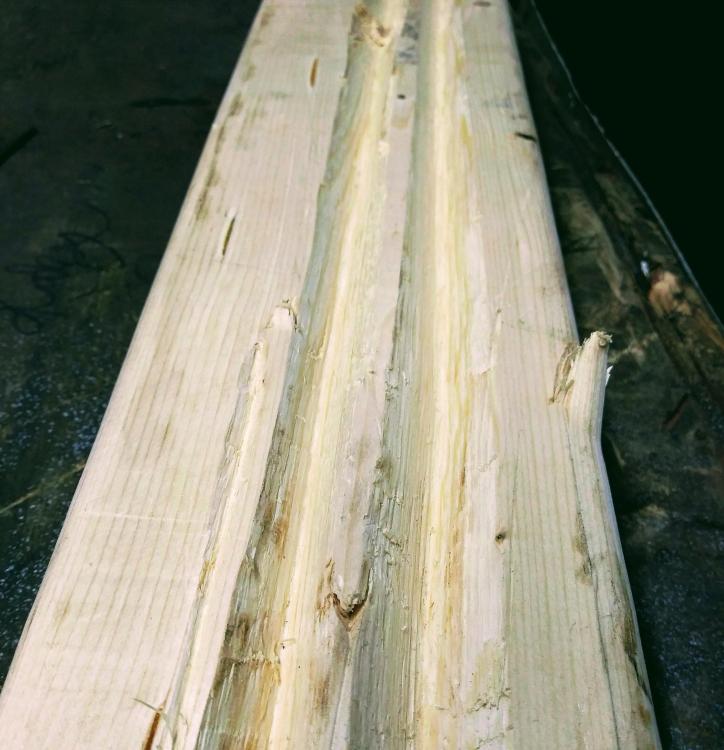
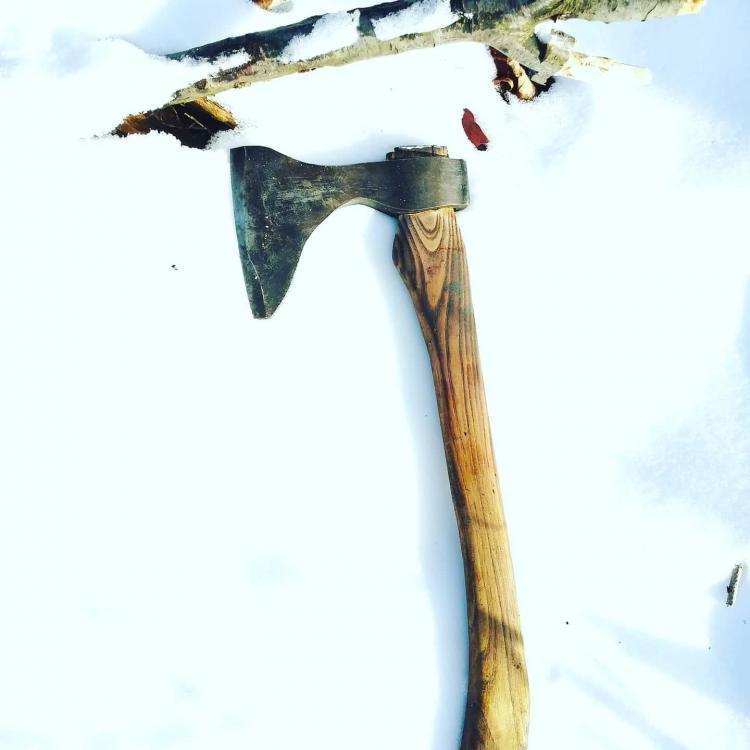
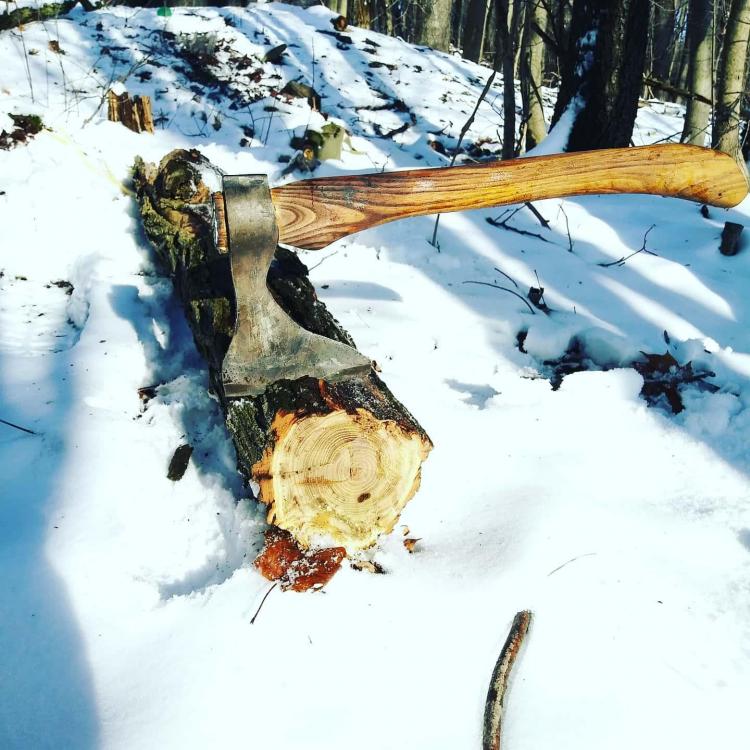
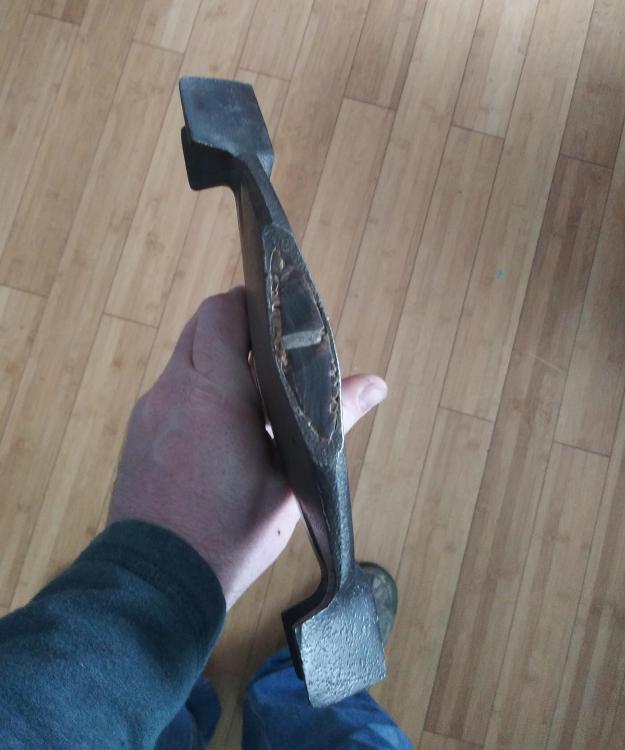
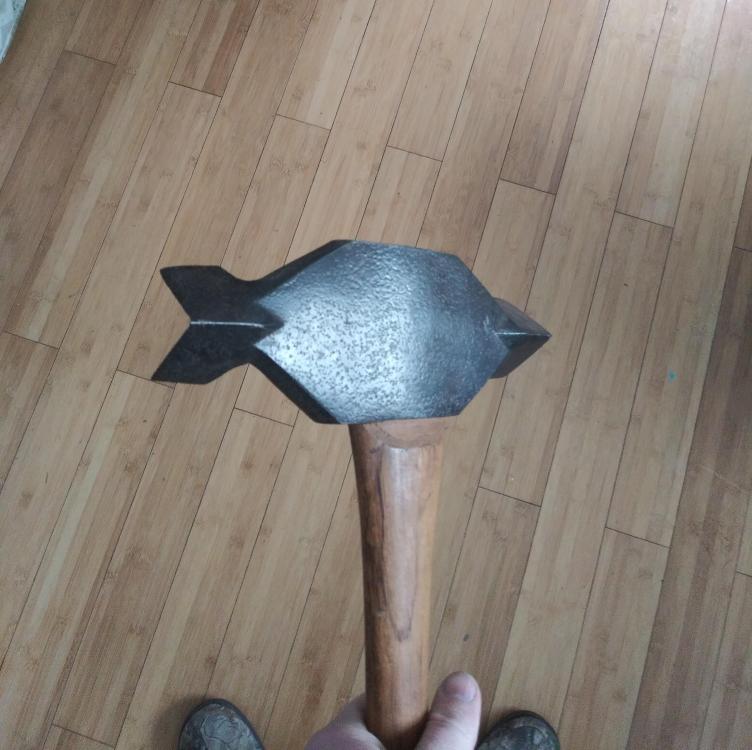
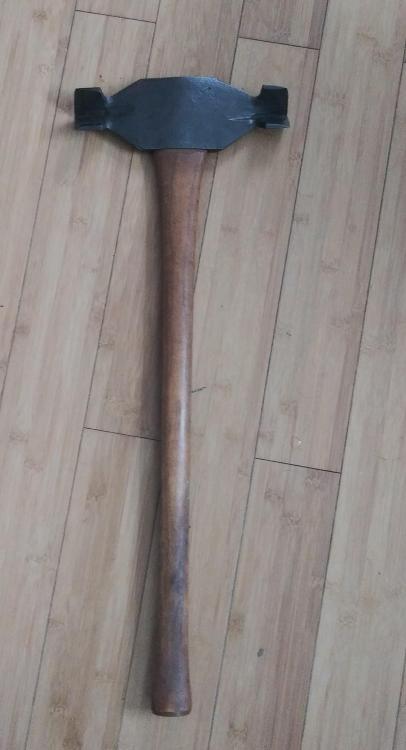
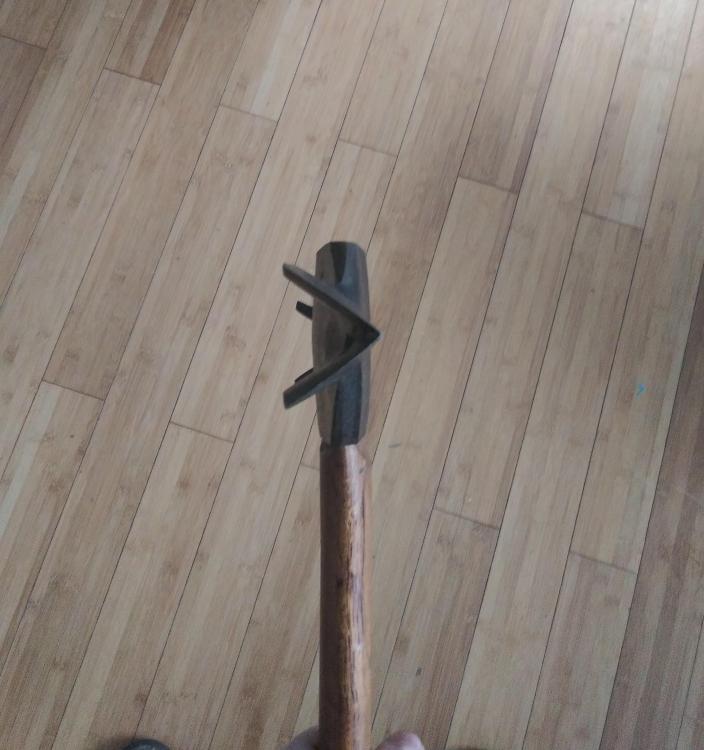
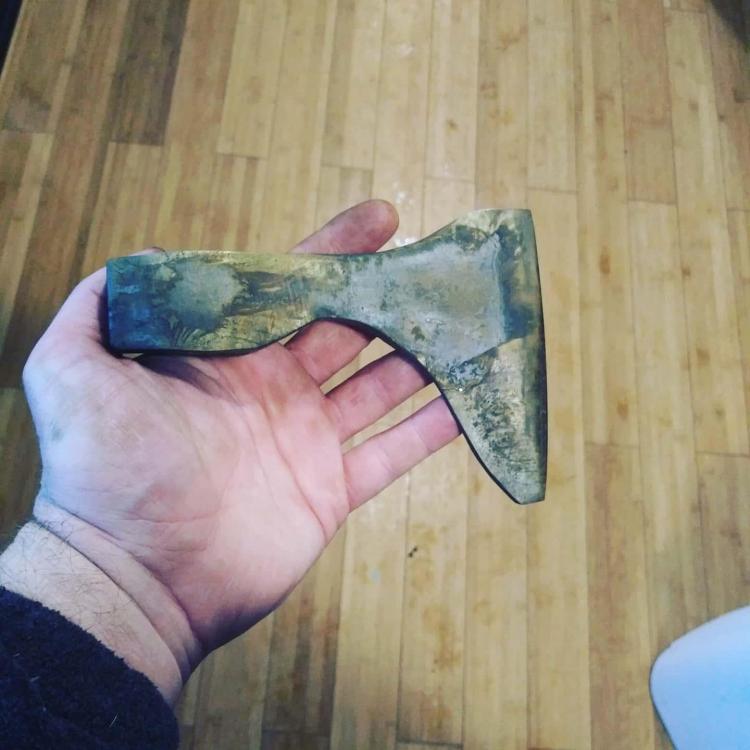
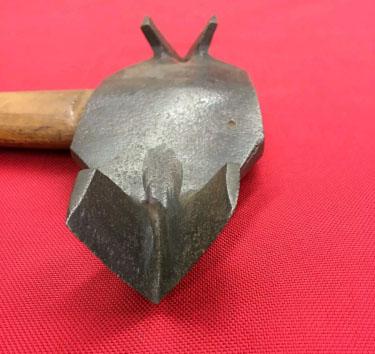
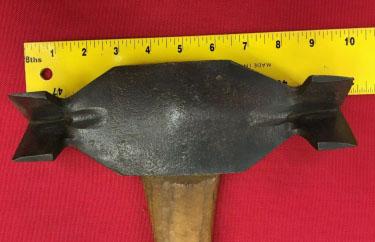
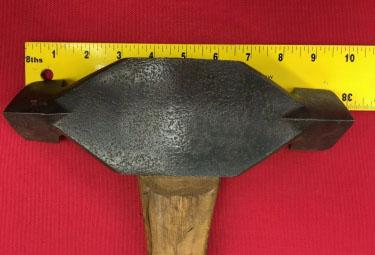
.thumb.jpg.2c1e9fdd83962a2a3e69aaa0bf86bde9.jpg)